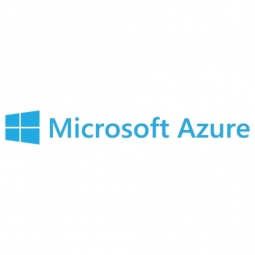下载PDF
Achmea's Digital Transformation: Boosting Performance with SAP HANA on Azure
技术
- 基础设施即服务 (IaaS) - 虚拟私有云
- 可穿戴设备 - 虚拟现实(VR)眼镜/耳机/控制器
适用行业
- 水泥
- 建筑与基础设施
适用功能
- 产品研发
- 仓库和库存管理
用例
- 施工管理
- 基础设施检查
服务
- 云规划/设计/实施服务
- 系统集成
挑战
Achmea 是一家总部位于荷兰的领先保险公司,其使命是成为全数字化保险提供商。然而,其一些关键业务工作负载(包括数据仓库和欺诈管理应用程序)托管在外部本地基础设施上老化的 SAP HANA 设备上。该基础设施即将结束服务,为了继续在本地运行,Achmea 必须花费大量资本支出来更换硬件。此外,为了保持最新状态,该公司需要每四年更新一次整个平台和基础设施。该公司的目标是到 2025 年成为荷兰的数字保险公司,这意味着继续使用物理硬件并不符合该公司的整体战略。 Achmea 的本地系统在 SUSE Linux Enterprise Server for SAP Applications 上运行,这是一个成功的操作系统部署,团队希望继续使用。因此,他们需要一个云解决方案和一个能够与其现有基础设施有效协作的提供商。
关于客户
Achmea Holding NV 是一家总部位于荷兰的领先保险公司。该公司的使命是到 2025 年成为一家全数字化保险提供商。Achmea 正在制定一项云战略,旨在为整个业务提供灵活性、可扩展性和速度,同时降低 IT 团队的生命周期管理要求。该公司优先考虑创新,并始终以最新技术为目标。 Achmea 的关键业务工作负载托管在外部本地基础设施上老化的 SAP HANA 设备上。该公司基于 Linux 的基础架构由 SUSE Linux Enterprise Server for SAP Applications 提供支持。
解决方案
Achmea 决定迁移到 Microsoft Azure,并向 Microsoft 合作伙伴网络成员 SUSE 寻求专业知识,以获取迁移方面的帮助。 Achmea 使用 Microsoft Azure 上的 SAP HANA 认证虚拟机,开始转型,将三个重要且需要大量数据的应用程序转移到基于虚拟机的 Linux Enterprise Server 实例中:HANA 上的 SAP Business Warehouse、欺诈管理和联络中心应用程序。该过程从详细的测试和开发阶段开始。 SUSE 和 Microsoft 帮助 Achmea 测试可能的故障转移场景,包括运行额外的应用程序服务器来确定基于虚拟机的 Linux 实例是否可以应对该卷。该团队在一个周末内完成了初始迁移,其中包括使用标准 SAP 工具和团队的概念验证架构在 Azure 虚拟机上进行 HANA 上的多节点 SAP Business Warehouse 横向扩展部署。该公司的 SAP 应用程序在 Azure 可用区内使用 SUSE Pacemaker Clusters 和 SAP HANA System Replication 进行部署,为数据中心故障提供高可用性和弹性,恢复点目标为零或接近零恢复时间。
运营影响
数量效益
相关案例.

Case Study
System 800xA at Indian Cement Plants
Chettinad Cement recognized that further efficiencies could be achieved in its cement manufacturing process. It looked to investing in comprehensive operational and control technologies to manage and derive productivity and energy efficiency gains from the assets on Line 2, their second plant in India.

Case Study
IoT System for Tunnel Construction
The Zenitaka Corporation ('Zenitaka') has two major business areas: its architectural business focuses on structures such as government buildings, office buildings, and commercial facilities, while its civil engineering business is targeted at structures such as tunnels, bridges and dams. Within these areas, there presented two issues that have always persisted in regard to the construction of mountain tunnels. These issues are 'improving safety" and "reducing energy consumption". Mountain tunnels construction requires a massive amount of electricity. This is because there are many kinds of electrical equipment being used day and night, including construction machinery, construction lighting, and ventilating fan. Despite this, the amount of power consumption is generally not tightly managed. In many cases, the exact amount of power consumption is only ascertained when the bill from the power company becomes available. Sometimes, corporations install demand-monitoring equipment to help curb the maximum power demanded. However, even in these cases, the devices only allow the total volume of power consumption to be ascertained, or they may issue warnings to prevent the contracted volume of power from being exceeded. In order to tackle the issue of reducing power consumption, it was first necessary to obtain an accurate breakdown of how much power was being used in each particular area. In other words, we needed to be able to visualize the amount of power being consumed. Safety, was also not being managed very rigorously. Even now, tunnel construction sites often use a 'name label' system for managing entry into the work site. Specifically, red labels with white reverse sides that bear the workers' names on both sides are displayed at the tunnel work site entrance. The workers themselves then flip the name label to the appropriate side when entering or exiting from the work site to indicate whether or not they are working inside the tunnel at any given time. If a worker forgets to flip his or her name label when entering or exiting from the tunnel, management cannot be performed effectively. In order to tackle the challenges mentioned above, Zenitaka decided to build a system that could improve the safety of tunnel construction as well as reduce the amount of power consumed. In other words, this new system would facilitate a clear picture of which workers were working in each location at the mountain tunnel construction site, as well as which processes were being carried out at those respective locations at any given time. The system would maintain the safety of all workers while also carefully controlling the electrical equipment to reduce unnecessary power consumption. Having decided on the concept, our next concern was whether there existed any kind of robust hardware that would not break down at the construction work site, that could move freely in response to changes in the working environment, and that could accurately detect workers and vehicles using radio frequency identification (RFID). Given that this system would involve many components that were new to Zenitaka, we decided to enlist the cooperation of E.I.Sol Co., Ltd. ('E.I.Sol') as our joint development partner, as they had provided us with a highly practical proposal.

Case Study
Splunk Partnership Ties Together Big Data & IoT Services
Splunk was faced with the need to meet emerging customer demands for interfacing IoT projects to its suite of services. The company required an IoT partner that would be able to easily and quickly integrate with its Splunk Enterprise platform, rather than allocating development resources and time to building out an IoT interface and application platform.

Case Study
Bridge monitoring in Hamburg Port
Kattwyk Bridge is used for both rail and road transport, and it has played an important role in the Port of Hamburg since 1973. However, the increasing pressure from traffic requires a monitoring solution. The goal of the project is to assess in real-time the bridge's status and dynamic responses to traffic and lift processes.

Case Study
Bellas Landscaping
Leading landscaping firm serving central Illinois streamlines operations with Samsara’s real-time fleet tracking solution: • 30+ vehicle fleet includes International Terrastar dump trucks and flatbeds, medium- and light-duty pickups from Ford and Chevrolet. Winter fleet includes of snow plows and salters.






